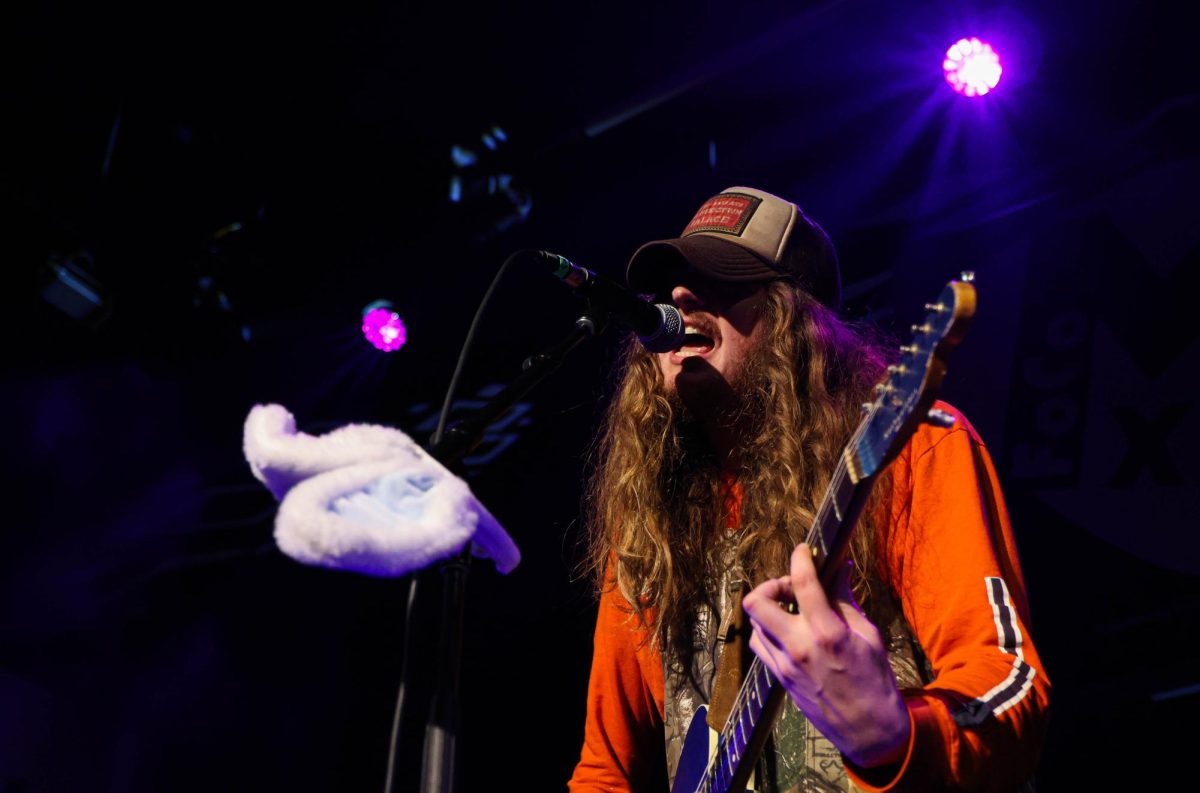Mel Gibson brings the story of Desmond Doss, a conscientious objector who received the Medal of Honor for carrying 75 men to safety during Okinawa, to life in a bloody and epic fashion in “Hacksaw Ridge.” Prior to the films release, Gibson’s return was one of the more talked about bits of Hollywood news this year. The release of “Hacksaw Ridge” marks Gibson’s first directorial role since Apocalypto in 2006.
Though the film opens in media res, the first sequence only betrays a hint of the violence to come. Gibson instead turns the films focus to Doss’s early life with a special emphasis on his pacifist views. This juxtaposition of Doss as a man of peace colliding with the brutal and unforgiving violence of the world around him is an overarching theme that Gibson has historically utilized well in “The Passion of the Christ.” Doss’s pacifist values are spurred on by a nearly fatal fight with his brother and the constant presence of his alcoholic WWI veteran father portrayed by an excellent and subtle Hugo Weaving. Skip forward 15 years, and a mostly grown up Doss meets Dorothy, a nurse at the local hospital. Their courtship is reminiscent of “Braveheart” and its romance sub plot, that is to say, it is highly idealized and very cliche. The dialogue between Doss and Dorothy often dips into eye-rolling levels of corniness, and it is a black mark on an otherwise well-crafted film.
Despite the objections of his father, Doss joins the army shortly after his brother. Soon afterwards, Doss ships out basic training, and the film and writing soon begin to pick up. Right away, we are introduced to the men Doss will train and later serve with. The men are a large collection of seemingly every war movie character cliche Gibson could find. There’s the loud but helpful man from Boston, the confident Italian, the silent and competitive one, the cocky one, the intelligent one and so on. The squad is soon addressed by the troop’s commander, Sergeant Howell played by Vince Vaughn. Vaughn does his best to channel R. Lee Emery’s iconic performance from Full Metal Jacket, though it is clear he is not all that comfortable with the role in these scenes. By the end of basic training, Vaughn has settled into the role, and delivers a stellar performance, especially during the war sequences. Sam Worthington also delivers a wonderfully subtle performance as Captain Glover, though he really comes into his own during the battle sequences as well.
After a conflict with command in which he refused to hold a gun, command has Doss thrown in jail and almost court martialed. He is saved at the last minute by his father in a moment of redemption. Following this, Doss and company are shipped out to Okinawa where they are assigned to take Hacksaw Ridge in order to ultimately secure the island.
During the buildup before the big battle, Gibson takes great care in the lead up to the big fight. Gibson skillfully builds tension, fear and apprehension on the road to Hacksaw Ridge. As the company gets ever closer to the battlefield, the tension is palpable. During this sequence, the length is just right and builds a sufficient amount of dread without dragging its narrative feet.
The film truly kicks off as the first bullet flies in the fight for Hacksaw Ridge. The extended war sequence is a terrifying cacophony of blood, spilled guts, intestines, gunfire and confusion all fine tuned via excellent direction and editing. The battle is at once chaotic, yet easy to keep track of. The terror is present, but the spectacle is present as well. The action is quick, brutal, intense and visceral. The sequences never lose sight of important characters for too long, allowing audiences to keep track of the narrative without losing out on the horrors and chaos of war. Gibson does not shy away from the horrors of war, and Hacksaw Ridge is no exception.
Should you watch it?: Yes
“Hacksaw Ridge” suffers from pacing issues and an awkward and cliche narrative in its first half, but it opens up in its second half into a masterfully crafted war drama. With excellent performances from the cast and front man Andrew Garfield, Gibson’s return to cinema is well worth the cost of admission.





